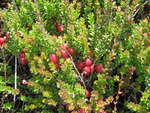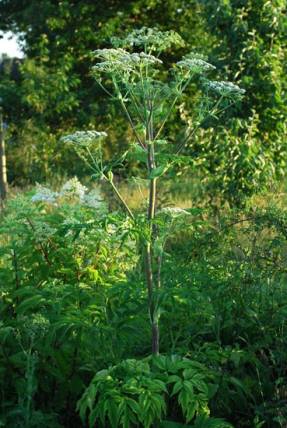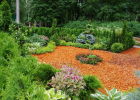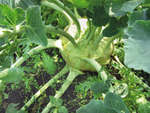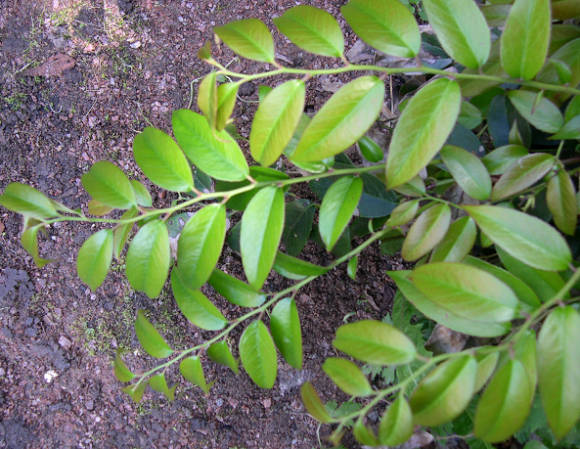
Cornflower blue, or field (Centaurea cyanus) has many other Russian names - hair, patchwork, rye patchwork, blue flower, blue, cyanosis, cyanosis, etc. And the Latin name for cornflower is associated with an ancient legend, according to which the cornflower was discovered by the centaur Heron. Therefore, the plant began to be called the centaur flower.
Cornflower is found everywhere. Like a flower in vegetable gardens, like a weed in plantings of rye and wheat. Its very beautiful flowers bloom in June-July and bloom until autumn.
It is an annual herb with a height of 40 to 80 cm. Inflorescences in the form of baskets, consisting of tubular and funnel-shaped flowers. After the flowers wither, achenes with a large fluffy tuft are formed in their place.
Preparation of medicinal raw materials
For medicinal purposes, flowers are harvested during the period of full flowering, but before they begin to wilt. The entire flower basket is cut off, and then all the blue marginal flowers are cut off for use, which are carefully separated from the inner tubular flowers, the ingress of which into the raw material reduces the quality of the drug. Cornflower grass is also a medicinal raw material, which is also harvested in June-August, and its roots are harvested in late autumn.
It is necessary to dry the collected raw materials in a well-ventilated shaded area, since blue flowers quickly turn white in the light, which deteriorates their quality. The shelf life of dry flowers is 1 year.
Useful properties of cornflower and recipes for use
Cornflower flowers have the richest chemical composition. They contain the bitter glycoside centaurin and other glycosides, tannins, organic acids, etc.
Cornflower has anti-inflammatory and antimicrobial effects, is used as an antispasmodic agent for liver diseases, a mild diuretic, choleretic and analgesic agent.

For colds, as an antipyretic and diaphoretic, it is necessary to pour 1 teaspoon of dried flowers with 1 glass of boiling water, insist, wrapped in a warm place for 2 hours, drain. Take 0.3 cups 3 times a day 20 minutes before meals.
As an expectorant for colds, pour 1 teaspoon of chopped dry cornflower roots with 1 cup of boiling water, boil under a closed lid in a water bath for 4–5 minutes, leave in a warm place for 1 hour, drain. Take 0.25 glasses 3 times a day 1 hour after meals.
In acute laryngitis, a collection is used, consisting of equal shares of cornflower flowers, linden flowers, ivy budra grass. To prepare the infusion, you need 1.5 tbsp. Pour 1 cup of boiling water over the crushed mixture, leave in a warm place for 1 hour, drain. Apply for inhalation 0.3 cups per procedure.
As an anesthetic, freshly picked cornflower herb, doused with boiling water and wrapped in gauze, is applied in the form of hot compresses to the affected areas of the body in case of pain.
The most widely used in folk medicine is cornflower for urological diseases, because its infusions and decoctions reduce the concentration of calcium, uric acid, inorganic phosphorus and other substances that are involved in the formation of stones.
As a diuretic, herbalists recommend a collection consisting of cornflower flowers, three-leaf watch leaves, bearberry leaves, parsley fruits, birch buds. To prepare the broth, you need 1 tbsp. pour a spoonful of the crushed mixture with 1 glass of boiling water, boil in a water bath for 10 minutes, strain. Take 0.5 cups 3 times a day 30 minutes before meals.
A good effect is obtained by a collection consisting of equal shares of cornflower flowers, birch buds, bearberry leaves, wheatgrass rhizomes, juniper fruits, parsley fruits and licorice root. To prepare the infusion, you need 1 tbsp. pour a spoonful of the mixture with 1 cup boiling water, leave for 30 minutes, drain. Take 1 tbsp. spoon 4-5 times a day 20 minutes before meals.
As a diuretic and anti-inflammatory agent, a collection consisting of parts of cornflower flowers, part of bearberry leaves, part of licorice root is used. To prepare the infusion, you need 1 tbsp. pour a spoonful of the crushed mixture with 1 glass of boiling water, leave for 30 minutes, strain. Take 0.25 glasses 4 times daily before meals.
With urinary retention due to a disease of the urinary organs, a very complex collection is used, consisting of cornflower flowers, birch buds, elderberry root, bearberry leaves, corn stigmas, and horsetail grass.
To prepare the infusion, you need 1 tbsp. pour a spoonful of the crushed mixture with 1 glass of cold water, leave for 8-10 hours, boil in a water bath for 5 minutes, insist in a warm place for 45 minutes, drain. Take 1 glass 4-5 times a day.
For diseases of the bladder and prostatitis, an infusion of herbs and cornflower flowers is used as an anti-inflammatory agent in folk medicine. To prepare it, you need 1 tbsp. pour a spoonful of raw materials with 1 glass of boiling water, leave for 1 hour, drain. Take 1 tbsp. spoon 3 times a day.
In case of kidney and bladder disease, folk medicine uses a collection consisting of one part cornflower flowers, one part bearberry leaves and one part licorice root. To prepare the infusion, you need 1 tbsp. pour a spoonful of the crushed mixture with 1 glass of boiling water, insist in a warm place for 20 minutes, strain. Take 1 tbsp. spoon 4-5 times a day 20 minutes before meals.
For cholecystitis and as a choleretic agent, a collection of cornflower flowers, immortelle flowers, centaury herbs, oregano herbs, calendula flowers are used. To prepare the infusion, you need 1 tbsp. pour 0.5 liters of boiling water over a spoonful of the crushed mixture, insist in a thermos for 6 hours, strain. Take 0.5 cups warm 3 times a day 30 minutes before meals.

Infusion of cornflower flowers (1 teaspoon per 1 glass of boiling water) is used for edema of cardiac origin and for heart attacks. For external use, use a stronger infusion of flowers (2 teaspoons per 1 glass of boiling water).
Remember! Cornflower infusions and decoctions are poisonous. They should not be taken by pregnant women and children, or without consulting a healthcare professional.
Cornflower flowers are also used in cosmetics. Infusion of flowers (1 tbsp. Spoon for 1 glass of boiling water) rubbed hot into the scalp for baldness and seborrhea. And with oily and porous skin, the infusion of cornflower flowers should be mixed with 1 tbsp. spoon of vodka and use for wipes and compresses.
Cornflower flowers in the form of decoctions are used for irritation of dry skin of the face and hands. Cornflower is part of the bath collection.
Cornflower did not leave aside cooking either. It is added to sour cream sauce, which is served with pork, cabbage soup and borscht are cooked with it, it is added to salads.
"Ural gardener" No. 7, 2017

